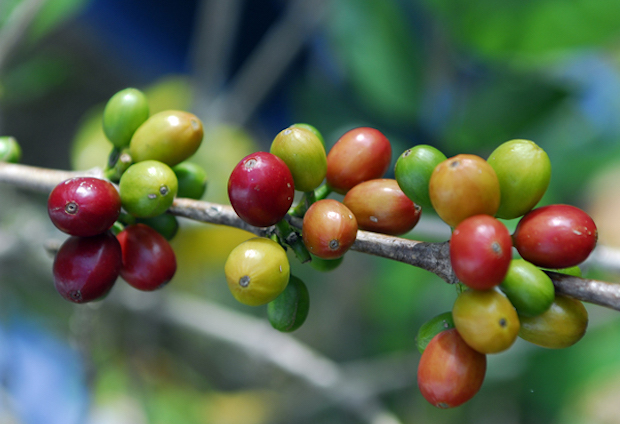Coffee is behind in the ongoing race to protect wild plant species biodiversity as the earth faces increasing climate change, loss of habitat and other natural and man-made challenges, according to a new conservation research study.
A fascinating new “Useful Plants Indicator” shows that, among 7,000 plant species studied, only 3 percent are classified as “low priority” or “sufficiently conserved.”
Developed by the Colombia-based International Center for Tropical Agriculture (CIAT) in collaboration with the Global Crop Diversity Trust, the U.S. Department of Agriculture, and a number of universities and conservation organizations, the indicator draws from some 43 million plant records from nearly every country on earth.
The indicator’s purpose is to emphasize the need, and identify specific countries and species, for increased conservation efforts, while working towards multiple global sustainability standards and goals, including United Nations Sustainable Development Goals and Convention on Biological Diversity targets.
“This indicator underscores the urgency to protect the world’s useful wild plants,” CIAT Biodiversity Specialist Colin Khoury said in an announcement of the online tool, which precedes a related study scheduled for publication in March 2019. “The indicator not only helps us measure where countries and the world stand with regard to safeguarding this natural and cultural heritage, but it provides actual information per species that can be used to take action to improve their conservation status.”
The indicator weighs both “in situ” plant conservation (e.g. plants in protected areas like national parks) and “ex situ” (plants protected in places like gene banks or botanical gardens). Each of the 7,000 species examined for the indicator is given a score of 0-100, with 100 meaning “fully protected.” Plants rated 75 or higher are considered “sufficiently conserved,” while each 25-point range down from 75 is given its own priority for conservation, from low (50-74) to medium (25-49) to high (0-24).
Regarding coffee, the indicator echoes previous concerns from groups such as World Coffee Research and Crop Trust that coffee is trailing other key agricultural crops in terms of preservation of genetic diversity, an important tool as the coffee science community addresses ongoing challenges such as climate change, diseases and pests.
“Coffea liberica, a wild coffee plant that used to make a caffeinated brew in parts of Africa and sought by coffee breeders for its disease resistance, scores only 32.3 out of 100 on the indicator,” CIAT wrote in a recent announcement of the indicator. “The wild ancestor of the connoisseur’s preferred bean, C. arabica, does not fare much better, scoring 33.8. Of the 32 coffee species listed, none scores higher than 35.3. Of those, more than two thirds have no known viable genetic material stored in gene banks or other repositories.”
The group’s study did yield some promising results related to “in situ” conservation, finding a 40.7 score for all the plants studied in natural settings, as opposed to gene banks, etc. However, the group cautioned that unauthorized habitat destruction and a rapidly changing climate threaten the reliability of in situ conservation efforts.
“The indicator shows that the network of protected areas around the world is doing something significant for useful plants,” Khoury said. “But if we want to get serious about protecting these species, especially the ones that are vulnerable, we have a long way to go before they are fully protected.”
Nick Brown
Nick Brown is the editor of Daily Coffee News by Roast Magazine.
Comment
1 Comment
Comments are closed.











In 1989 I wrote what may have been the first article calling attention to these and related issues in coffee. It was titled'”Coffee, Economics and the Environment”. The first sentence read “Coffee, as currently grown and harvested, is not sustainable”. Of course, I was coming from a background of environmental law and indigenous issues which were both nonexistent in the industry at the time, and I was slammed for the article by some of the folks who made a great living off coffee as usual. On the one hand, I am glad to see the industry finally catching up. On the other, I am deeply saddened by the slow progress on awareness and even slower reaction of the industry to the many aspects of sustainability (from birds and bees to trees, to water, soil, climate, pricing, human rights and beyond) that are coming to haunt us.